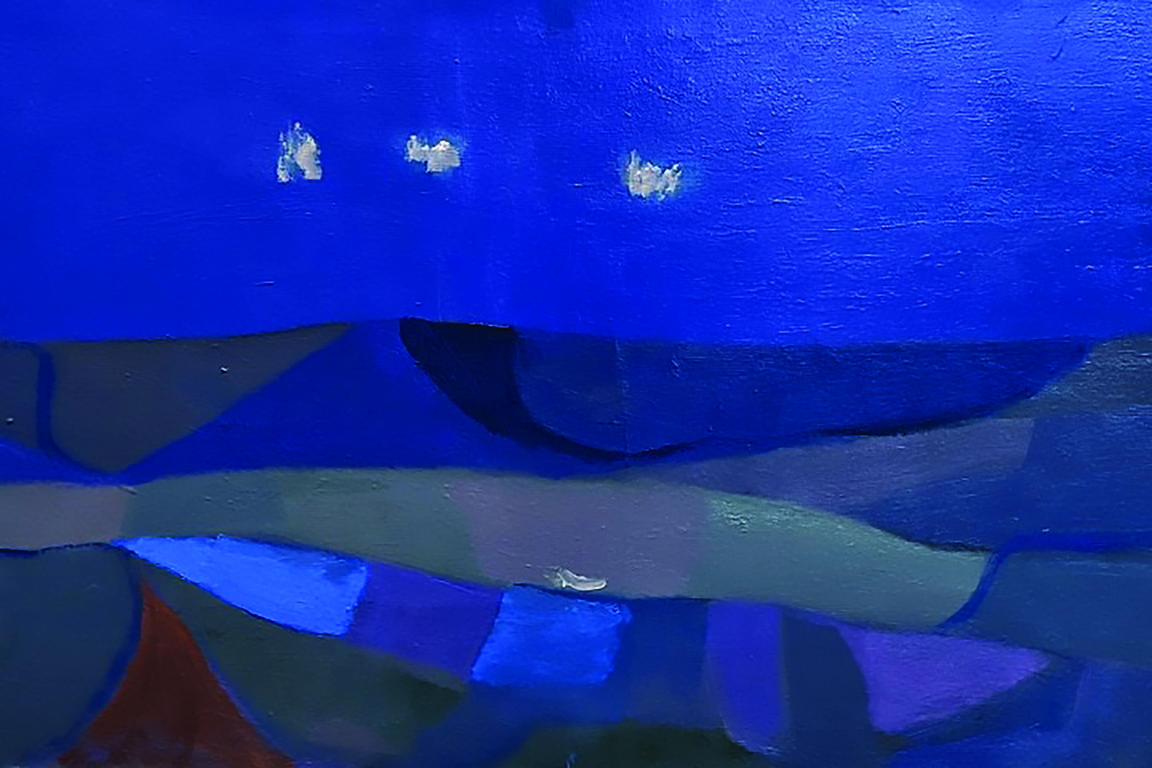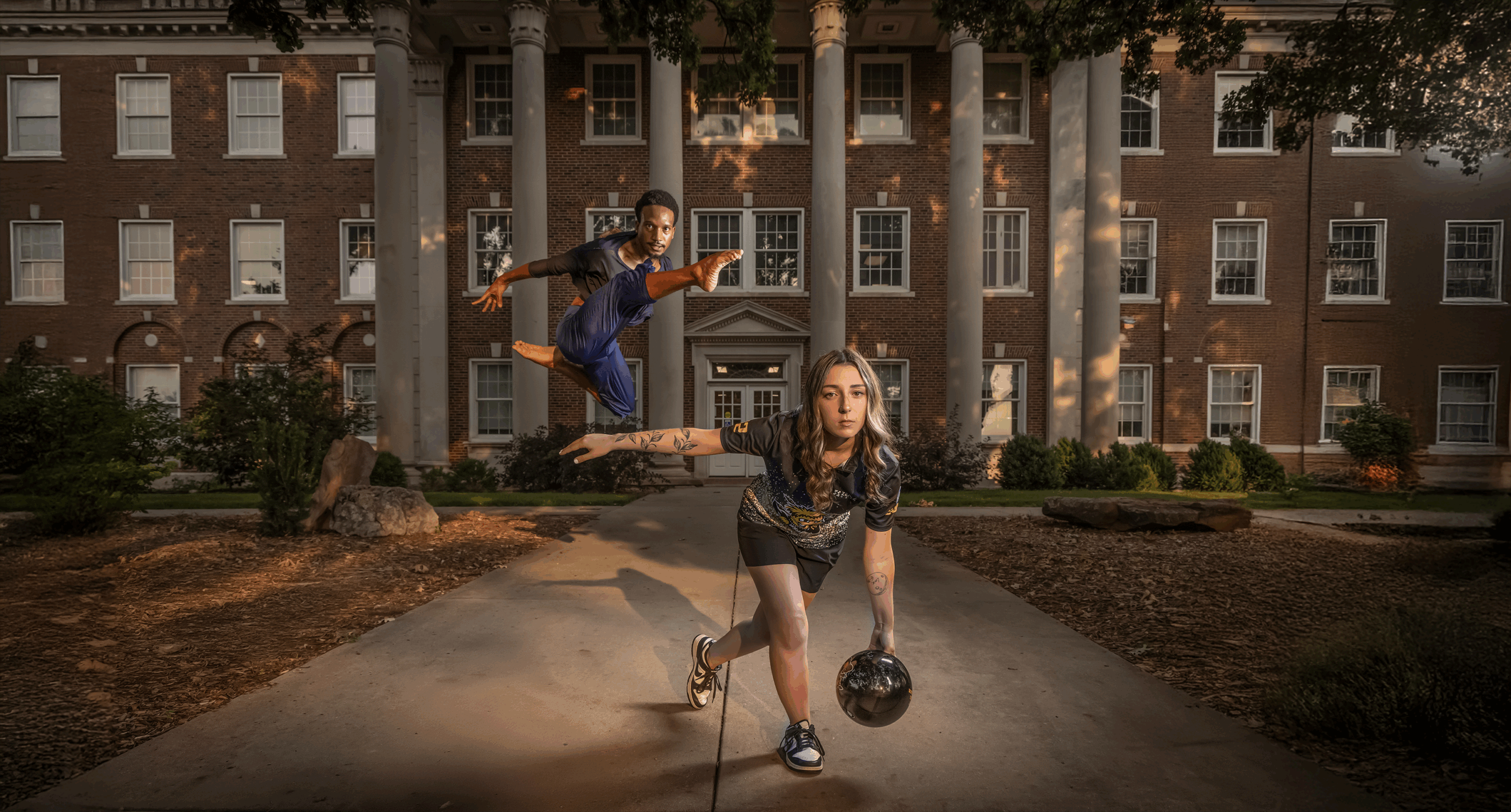Wichita State re-envisions its main campus atop Fairmount Hill
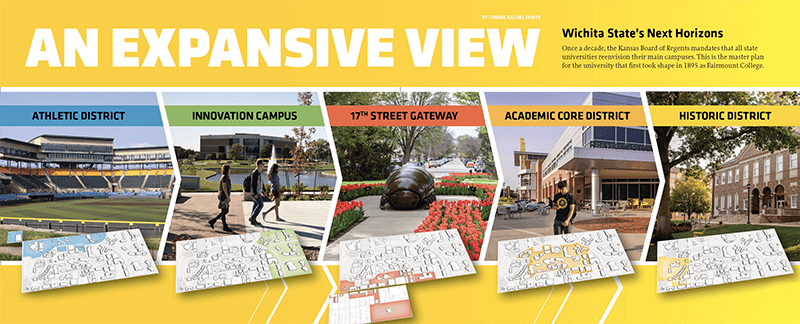
Once a decade, the Kansas Board of Regents mandates that all state universities re-envision their main campuses. This is the master plan for the university that first took shape in 1895 as Fairmount College.
Back in 1926, a year after the creation of the first entity more or less equivalent to our modern day state board of regents, the newly established Municipal University of Wichita prepared a plan for its “when fully developed” campus. This year, Wichita State shared its newest plan.
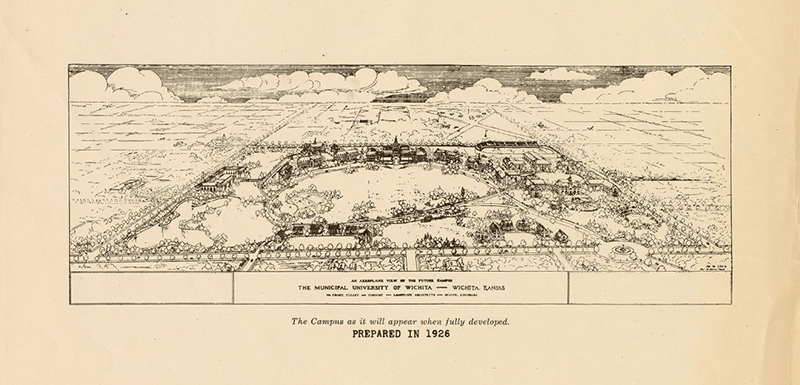
Illustrated from an “aeroplane view,” 1926’s future campus retained its initial Fairmount College footprint – a looping hilltop drive with buildings radiating from a central green space and anchored, front and center, by the venerable Fairmount Hall. Fiske Hall, originally a men’s dormitory, was there, along with Morrison Library, which had opened its doors in 1909 (and burned in 1964), as well as Henrion Gymnasium and the first football stadium, all nestled within the corner of campus bounded by Hillside and 17th streets.
“It’s interesting to look at that plan,” says WSU President Rick Muma from his second-floor office in Morrison Hall, the clock-towered, red-brick building built in 1939 as the university’s second library and, since 1962 with the opening of Ablah Library, utilized as administrative space. Muma points to a printout of the 1926 plan, to the open space inside the oval drive, and says, “With the development of the Innovation Campus, the university’s center has shifted east, so in our plan now there’s a big, green area called the Main Lawn with a pedestrian walkway – the Shocker Promenade – that will basically go from where Hubbard Hall is now all the way to Woolsey Hall. All of our central services for students, including the Shocker Success Center, are going to be around that central green space. It’s going to connect the west part of our campus with the east – and the old with the new.”
Emily Patterson, executive director of facilities planning at WSU and a key member of both the executive and steering committees for the 2024 master plan, credits everyone involved, including consultants from the global architecture, design and planning firm Gensler, with “taking a step back to look forward in our intentional planning of space.” An architectural engineer and acoustics expert, Patterson says she’s especially interested in seeing how both inside and outside gathering places – “sticky third spaces,” as she puts it – develop and help unify the university’s 330-acre main campus, which, when she arrived at WSU just over 11 years ago, sported a golf course where its Innovation Campus is now.
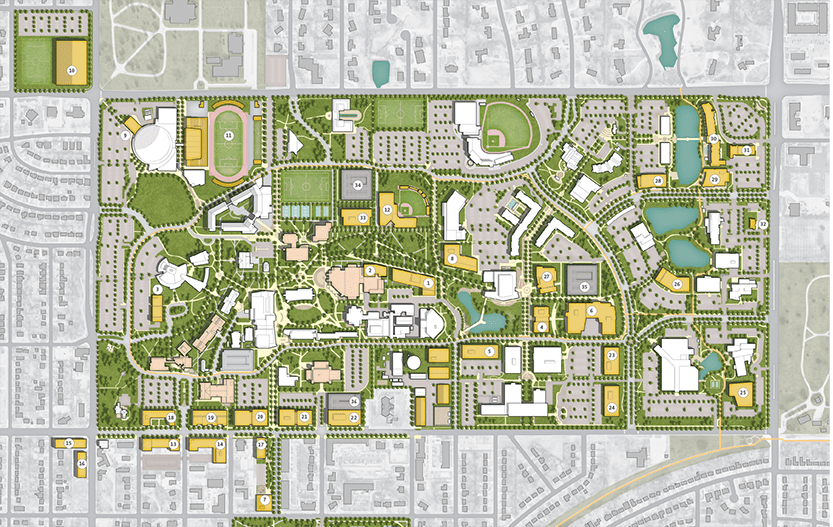
Everything from analytical findings on classroom usage and facility conditions, to stakeholder engagement and storm water runoff is covered in the 183 pages of the 2024 plan. There are details on subterranean systems and ground-level projects that include taking down outmoded buildings and putting up state-of-the-art replacements. There’s discussion of the concept of “The City Is Our Campus” with a listing of the university’s eight major off-campus locations, including the collaborative, under-construction Wichita Biomedical Campus downtown.
But it’s the drone-level view of a more unified main campus with five intermingled but distinct districts – Athletic District, Innovation Campus, 17th Street Gateway, Academic Core, Historic District – that has excited the imagination of many university stakeholders, including Shirley Lefever, WSU executive vice president and provost.
“My favorite aspect of the plan,” she says, “is the priority it places on unifying the campus, blending Innovation Campus spaces and academic/student life spaces into a more cohesive ‘one university.’ WSU is known for its innovative spirit and ‘can do’ attitude, and students have long had opportunities to work in industry and community agencies as part of their university experience. Another way the plan helps achieve this is by having interdisciplinary academic buildings that serve multiple programs. By bringing these central facets of our campus together, the message is clear: We are better together.”
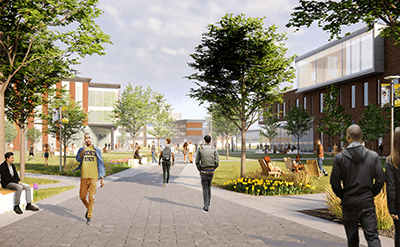
John Tomblin, executive vice president for Research and Industry & Defense Programs, says, “When we proposed the Innovation Campus 10 years ago, there was a clear distinction between the Innovation Campus and the main campus. The master plan creates an academic district at the center of the university that serves as the epicenter to one united campus.”
Coleen Pugh, graduate school dean and professor of chemistry, says what’s most exciting to her is the “physical joining of all areas of the main campus, along with the stated commitment to quality laboratory spaces and renovating buildings in the Historic District. I believe this commitment to connection and cohesiveness recognizes that academic research tends to generate the most innovative ideas in any field, and thereby brings unique perspectives to applied research.”
For Kevin Saal, director of athletics, the plan’s most salient feature is its “alignment with President Muma’s and our institution’s foundational priorities, which are, one, providing an affordable and accessible education, two, developing a talent pipeline, and, three, increasing economic prosperity for the community, state and region. We’re here to develop young people and programs through first-class service. The master plan fuels our commitment to institutional priorities and the necessity to recruit, develop and retain elite talent.”
Of paramount interest to Mathew Muether, associate professor of physics who is serving as WSU Faculty Senate president, are plans for revitalizing the academic and historic districts. “Prioritizing bringing modern teaching and lab facilities to the heart of the campus is a commitment to academic and research excellence that will serve students and faculty for years to come,” he says.
Anthony Muscat, dean of the WSU College of Engineering, applauds the plan for “ushering in the next chapter for Wichita State to become a premier urban public research institution by focusing on building the infrastructure to support world-class research, increase student enrollment and expand opportunities for practical, paid applied learning experiences for students.” He adds, “New engineering buildings will enable us to help meet the growing demand for engineering talent from employers.”
Andy Schlapp ’92, vice president of strategy and government relations, adds, “The way students will learn, research and work is changing, and WSU must design infrastructure that meets the future needs of our students, employees and the global economy.”
Architecturally speaking, Patterson notes that as plans take physical shape with priority construction projects, including the modernization of Ablah Library, a denizen of the Academic Core, a harmonizing palette of building materials reflective of the different styles on campus will be used. “You can see this in Woolsey Hall,” she says, looking out her Gaddis Physical Plant office window across Perimeter Road to the first academic building to be built on the Innovation Campus. “Woolsey has the red brick from our traditional academic structures but in a modern form with wood accents and steel.”
Teri Hall, vice president for student affairs, is looking forward to the unfolding of the master plan, especially, she says, “for its open spaces and park-like atmosphere. I can envision students utilizing these outdoor areas to study, dream, reflect and socialize.” She adds that she’s also excited about new recreational spaces and sports facilities for students and student-athletes, things that add to campus life.
Community engagement is top of mind for Jennifer Friend, dean of the College of Applied Studies (CAS), who mentions the plans for a new Child Development Center to be built within the 17th Street Gateway district and the expansion of “our facilities for the WISE Clinic’s free community mental health counseling and play therapy services provided by CAS grad students.”
Telly McGaha, WSUFAE president and CEO, is enthusiastic about the plan’s community outreach and mixed-use development of the 17th Street Gateway, which, he says, “presents tremendous opportunity to build upon the Shocker student experience. Research shows that the more positive students feel about their experiences, the more apt they are to become supportive, engaged alumni. I appreciate the vibrant student experience the 17th Street Gateway could bring to campus.”
In his office, Muma looks up from the 1926 plan and smiles. “No plan is ever ‘fully developed,’” he says. “Ours is a road map to guide us. There’ll be detours along the way. We’ll need to stay agile and adaptable – ready to seize opportunities as they arise.”
And ready, too, to enjoy the open spaces and expansive views from atop Fairmount Hill.
“The 2024 master plan is more than a collection of blueprints and diagrams. It reflects our collective vision for the university and embodies our commitment to affordability and access, feeding the talent pipeline, and increasing economic prosperity for our community, state and region.”
Learn more about the 2024 master plan: https://www.wichita.edu/about/masterplan/index.php
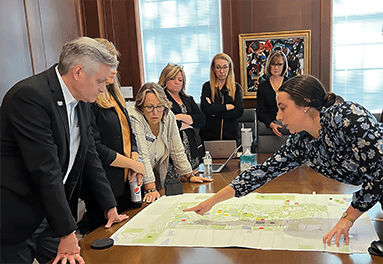
RICK MUMA
President, Wichita State University


